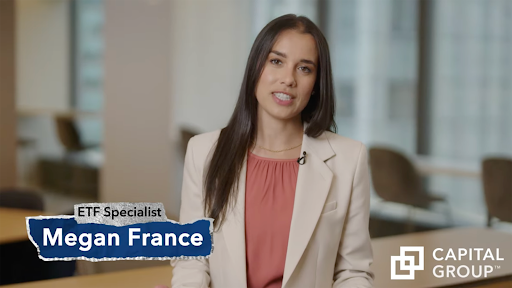Good morning, and happy October.
Many coin. Such invest! Very unsales.
The US got its very first spot-price memecoin ETF just less than two weeks ago, the REX-Osprey DOGE ETF (DOJE). It was a milestone for the business, regardless of whether one supports memecoins or finds them very silly. When it comes to sales so far of DOJE … cue the sad trombones. The fund represents about $20 million so far.
Certainly, more down-market crypto funds are on their way, given that the SEC recently approved the use of generic listing standards, meaning that individual spot-price ETFs won’t have to get exemptions from the regulator. If the crypto ETF business has shown anything so far, it’s that it pays to be first-to-market. So maybe there is hope for DOJE. Much future!
Dual Share Classes Are Coming Soon. Now, What?

On your mark … get set … wait.
The SEC’s pending approval of dual share classes may be the biggest story of the year for ETFs, but it may nonetheless be a while before ETF share classes of mutual funds, and vice versa, become available to investors. Following the regulator’s notice on Monday that it is set to greenlight Dimensional Fund Advisors’ request for dual share class exemptions, the company noted that it would launch share classes as soon as it is ready. That firm is certainly well ahead of most others in that regard: It already provides a range of funds in both the mutual fund and exchange-traded fund wrappers, and it has been seeking approval for several years. But even Dimensional says there is a way to go.
“We know many investors are eager for the ability to exchange mutual fund shares for ETF shares without incurring transaction costs or taxes,” co-CEO Gerard O’Reilly said in an announcement, adding that custodians will need to get up to speed to facilitate the new products.
Like Sands Through the Hourglass, So Are the ETFs of Our Lives
F/m Investments plans to initially launch mutual fund shares of its US Treasury 3 Month Bill and Ultrashort TIPS ETFs. CEO Alex Morris said it’s a way for issuers to enter into the 401(k) market. “Expect an initial wave of approvals for mature applications, followed by a gradual rollout,” he said. Following SEC approvals, fund boards must consider whether adding share classes is appropriate for products. ETF share classes of mutual funds with capacity constraints, for example, may not be a good fit.
“It’s going to be a game-changer for the industry,” said Matt Barry, head of capital markets at Touchstone Investments. “You’re going to see a lot of those [active mutual] funds offer ETF share classes … with strategies that are already at scale.” Touchstone, like most others, will likely be a year away from launching the new share classes, he said. That is in part due to the operational challenges that firms will have to address, especially if they specialize in one wrapper, but not the other. And another issue is “the ETF ecosystem’s ability to handle that number [of new] products,” Barry said, citing a potential lack of lead market makers to put up capital to support ETF share classes.
Some highlights of the dual share class application race:
- About 80 companies have requested exemptions, including big asset managers like BlackRock, State Street and JP Morgan.
- The SEC worked with Dimensional to incorporate feedback from the industry in amendments to that company’s application, encouraging other firms to more or less copy it. Applications were revised a couple times this year to address fund boards’ responsibilities, investor disclosures, differences in dividend schedules between product types and other issues.
Test Drive: “Boards have to kick the tires. The current framework contemplates substantial board oversight,” said Aisha Hunt, principal at law firm Kelley Hunt, who worked with F/m Investments on its application. There is an educational hurdle for firms in adding ETF or mutual fund shares, and companies will have to perform due diligence with RIAs and broker-dealers to see whether there is demand, she said. “You want to do it to ensure you can drive asset growth and economies of scale to benefit fund shareholders.”
All ETFs Can Be Tax Efficient, But Not All Are Created Equal — Here’s What to Look For

When gauging the tax efficiency of an ETF, it’s really important to know what the ETF is invested in and to understand the ETF issuer’s approach to tax efficiency.
Megan France of Capital Group says: “We aren’t just tax aware, we’re tax obsessed,” which means the tax efficiency of our ETFs has been considered at every stage: from initial product development to daily trading operations.
The important part: ETFs’ tax superiority over mutual funds hinges on primary market trading mechanisms that systematically push out highly appreciated assets at the fund level to minimize taxable distributions to shareholders.
If you’re using ETFs in your clients’ portfolios, take three minutes and learn how Capital Group seeks to maximize ETF tax efficiency.
Capital Client Group, Inc.
Move Over State Street. JPMorgan Becomes Latest to File for Private Credit ETF
What’s private is increasingly becoming public … or at least retail.
This week, J.P. Morgan Asset Management got in line to be the next ETF issuer dabbling in private credit. The firm filed Tuesday with the Securities and Exchange Commission for approval of its Total Credit ETF, a product that would allocate up to 15% of assets to private credit.
“The US corporate credit market is increasingly converging, as issuers move fluidly between public bonds and private credit,” said Jed Laskowitz, global head of private markets and customized solutions for J.P. Morgan Asset Management. “The private credit market can add yield and diversification benefits to portfolios, and investors are increasingly interested in investing actively across the public and private credit spectrum.” The firm declined to comment on the product filing itself.
Portfolio Power-Up
With private credit funds having high yields, they are worth considering for a small slice of an investor’s portfolio, said Alvin Carlos, financial planner and managing partner at District Capital Management. “An aggressive client portfolio currently contains between 5% to 10% private credit via [business development companies] for high yield,” he said. The downside is volatility. “During a stock market crash, a BDC stock could drop by as much as 50%,” he said.
Semiliquid funds that are sold to nonqualified buyers reached $450 billion in assets through June, a 77% increase from 2022, according to a report last week from Morningstar. But State Street and JPMorgan aren’t the only major asset managers that want in on the action:
- Capital Group and KKR launched two private-credit interval funds that together have reached nearly $500 million.
- Vanguard, Wellington and Blackstone are also prepping one called the WVB All Markets Fund.
Will It ETF? The ETF filed this week would use J.P. Morgan Asset Management to underwrite primary or secondary markets investments, Bloomberg reported, citing a source familiar with the strategy. The company’s filing did not include fees, though the SPDR SSGA IG Public & Private Credit ETF (PRIV) charges 0.7% and its second fund, State Street Short Duration IG Public & Private Credit ETF, which launched last month, charges 0.59%. It’s early days in private credit ETFs, and those two funds represent $139 million and $25 million, respectively.
That’s not a verdict on the hotly anticipated category, but retail investors aren’t exactly piling into private credit ETFs yet.
AI-Powered ETFs Aren’t Living Up to Investor Expectations

The sales pitch for AI-powered ETFs was that algorithms could not only pick stocks more efficiently and logically than humans, but also less expensively. So far, most haven’t lived up to investors’ expectations.
AI-driven strategies use algorithms to research and gather data on stocks and investments to select a fund’s underlying holdings. Developers of such ETFs were betting that AI could build a valuable niche by processing information faster than any human analyst, spotting trends before the rest of Wall Street. Instead, they’ve underperformed or closed altogether, said Bryan Armour, Morningstar director of ETF and passive strategies.
“They are trying to make it work,” Armour said. “There have been a few attempts, but so far, it hasn’t been very successful.”
Closing Time
Of the 12 AI-powered ETFs that Morningstar began tracking around 2020, seven have closed due to low assets under management, according to Armour. A key reason is that the mistakes often made by active managers or new investors, such as overtrading, were also being made by the AI models. (The Amplify AI-Powered Equity ETF, AIEQ, which closed last year, had a 2,700% turnover ratio in its last year of operation, according to Armour.) The ones left standing have high fees — the Qraft AI-Enhanced US Large Cap Momentum ETF (AMOM), for example, has an expense ratio of 0.75% — preventing them from taking off, Armour added. “Of the ones that are still alive… all are pretty expensive,” he said. “You would think with AI picking it, it would be a cheaper substitute for an active manager. That hasn’t been the case.”
Other closed AI-driven ETFs include:
- The BTD Capital Fund (DIP), which used AI to invest in US equities and closed last year.
- The Optimize AI Smart Sentiment Event-Driven ETF (OAIE), which used AI to monitor option activity, closed in early 2024 after less than two years on the market.
Feel the BUZZ
One exception is VanEck’s Social Sentiment ETF (BUZZ), which has climbed 45% so far this year. The fund uses AI to sift through millions of blog posts, news articles and forum comments, measuring whether feelings about a stock are positive or negative. From there, a rules-based system selects the 75 most bullish large-cap names, capping each at a 3% weight and rebalancing monthly. Armour said BUZZ arose out of the memestock craze of 2021, when investors were trying to pick the next GameStop.
“At a high level, we think of the index as a way to measure the investor sentiment of stocks as a factor,” said VanEck product manager Coulter Regal. “There’s all types of factors — momentum, value, growth. But one thing that wasn’t really out there, or at least wasn’t measurable until recently, was sentiment.”
Where To Go From Here? AI may be more useful as a tool to gauge investor sentiment rather than as a standalone strategy. And investors are unlikely to want to give up the decision-making know-how of a flesh-and-blood fund manager, Armour said. “At least for a while, people would probably prefer having a human making the end decisions,” he added.
Extra Upside
- GRFT about to let it rip: Tuttle’s grift-themed ETF could launch this week.
- Ok, fixed it: JP Morgan converted a $1.3 billion fixed-income mutual fund to an ETF.
- Preparing for the crypto ETF boom: Expect a wave of spot-price digital asset funds very soon.
ETF Upside is written by Emile Hallez. You can find him on LinkedIn.
ETF Upside is a publication of The Daily Upside. For any questions or comments, feel free to contact us at etf@thedailyupside.com.

